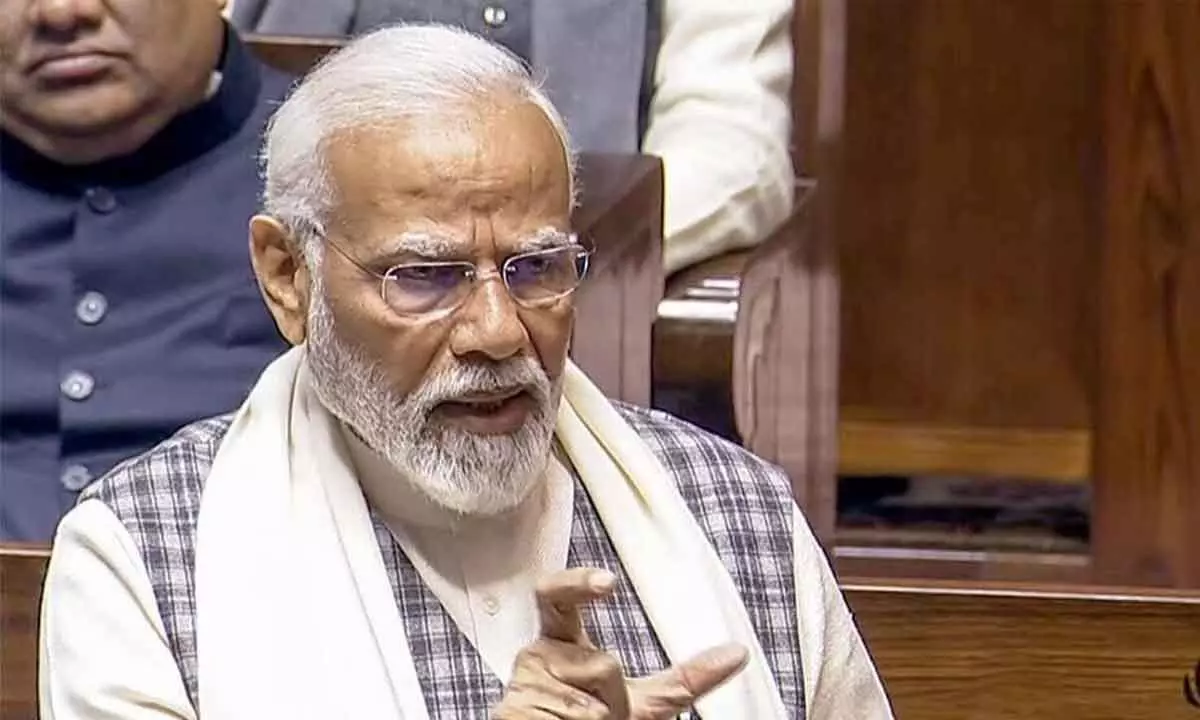Live
- They always want me to win, and now I feel lucky to have been offered a story like ‘Zebra’: Satyadev Kancharana
- ‘Democracy first, humanity first’: PM Modi in Guyana's parliament on two countries' similarities
- PKL Season 11: Telugu Titans register third straight win to top standings
- Is Pollution Contributing to Your COPD?
- NASA Unveils Underwater Robots for Exploring Jupiter's Moons
- Additional Central forces arrive in violence-hit Manipur
- AR Rahman and Saira Banu’s Divorce: Legal Insights into Common Issues in Bollywood Marriages
- 82.7 pc work completed in HPCL Rajasthan Refinery area: official
- Curfew relaxation extended in 5 Manipur districts on Friday
- Tab scam prompts Bengal govt to adopt caution over fund disbursement
Just In
Modi 3.0 inflation basket requires makeover


The Modi 3.0 government needs to focus on the changing pattern on food consumption in rural and urban India as the latest Household Consumption...
The Modi 3.0 government needs to focus on the changing pattern on food consumption in rural and urban India as the latest Household Consumption Expenditure Survey (HCES) released by the Ministry of Statistics and Programme Implementation (MoSPI) indicates that the share of cereals, cereal substitutes, vegetables and pulses has decreased while the share of beverages and processed food in the total spending of rural Indian households has crossed that of cereals. Apparently, the inflation basket needs to be changed.
Though in Telangana people still spend an average of Rs 2,156 on food in a month and their consumption of vegetables and cereals is more compared to many other states, it had gone down in Bihar, MP, Rajasthan and UP which offer a lower quality of life. Nine states — Uttar Pradesh, West Bengal, Odisha, Jharkhand, Bihar, Meghalaya, Madhya Pradesh, Chhattisgarh and Assam — lagged behind the national average in both rural and urban households. In five other states/UTs — Lakshadweep, J&K, Ladakh, Manipur, Dadra & Nagar Haveli, the urban average MPCE was less than the national urban average MPCE (monthly per capita consumption expenditure) of Rs 6,459.
The data shows that this expenditure has shifted to high-value and nutritious animal (milk, eggs, fish and meat) and horticulture (fruits and vegetable) products. An average rural household has, for the first time, spent more on milk and milk products (8.33 per cent of the total expenditure on food) than cereals (4.89 per cent) and pulses (1.77 per cent) combined. Same is true for vegetables; however, its share in overall expenditure has declined for both rural and urban households and more is being spent on discretionary items such as processed food, as well as durables like televisions and fridges.
The survey gives out average consumption expenditure across different economic classes in urban and rural India. The average MPCE for the bottom five per cent of the population was Rs 1,373 in the villages and Rs 2,001 in urban areas. The top five per cent had average MPCEs of Rs 10,501 and Rs 20,824, respectively, in rural and urban areas.
This means that the daily expenditure on different categories — from food and medical treatment to children’s education, transport and clothing — of the poorest five per cent in rural areas was as low as Rs 46, compared to Rs 350 of the richest five per cent. In urban areas, daily expenditure of the poorest five per cent was Rs 67, compared to Rs 694 of the richest.
According to the survey results, in rural India, the percentage spending on food in 2022-23 was 46.38 per cent, compared to 53.62 per cent on non-food items. In 1999-2000, the share of expenditure on food was 59.40, which declined to 53.11 per cent in 2004-05 and 52.90 per cent in 2011-12.
In urban India, the share of food in the average MPCE dipped to 39.17 per cent in 2022-23 from 42.6 per cent in 2011-12, 40.5 per cent in 2004-05 and 48.1 per cent in 1999-2000. The spending on non-food items in urban India was 60.83 per cent in 2022-23, up from 57.38 per cent in 2011-12, 59.49 per cent in 2004-05 and 51.94 per cent in 1999-2000.
Meanwhile, the share of egg, fish and meat has been continuously increasing in both rural and urban areas. On the flip side, the share of beverages and processed foods in both rural and urban areas has risen significantly while the spend on agricultural household had fallen below average or rural households. This new data is significant in the backdrop of ongoing farm protests, demanding a legal guarantee of the minimum support price (MSP).
In both urban and rural areas, conveyance has seen a sharp increase in expenditure, mostly due to increase in fuel costs and rising inflation. Similarly, drastic changes in lifestyle have resulted in increase in rising expenditure on medical treatment both in rural and urban areas.

© 2024 Hyderabad Media House Limited/The Hans India. All rights reserved. Powered by hocalwire.com






